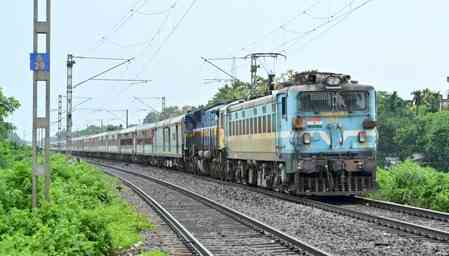Gold loan NPAs of NBFCs at 2.14 pc, banks at 0.22 pc
The ratio of gross non-performing assets in gold loans to the outstanding gold loans for scheduled commercial banks has increased marginally from 0.2 per cent in March 2023 to 0.22 per cent in March 2025, while for upper- and middle-layer NBFCs, it has increased from 1.21 per cent to 2.14 per cent over the same period, the Parliament was informed on Monday.

New Delhi, Aug 18 (IANS) The ratio of gross non-performing assets in gold loans to the outstanding gold loans for scheduled commercial banks has increased marginally from 0.2 per cent in March 2023 to 0.22 per cent in March 2025, while for upper- and middle-layer NBFCs, it has increased from 1.21 per cent to 2.14 per cent over the same period, the Parliament was informed on Monday.
Minister of State for Finance Pankaj Chaudhary, in a written reply to a question by the Leader of the Opposition in the Lok Sabha, Rahul Gandhi, also stated that the office of the RBI Ombudsman has received 188 complaints related to gold loans during the financial year 2024–25. These complaints are handled in accordance with the provisions of the RBI Integrated Ombudsman Scheme, 2021.
Further, in accordance with extant guidelines, banks and NBFCs undertake various measures to mitigate the risks involved in gold loans. These include assessment and re-assessment of the gold offered as collateral at regular intervals to ensure purity by methods such as acid tests, touchstone testing, and X-ray fluorescence (XRF) analysis, empanelment of trained and skilled appraisers to assess the value of gold pledged and valuation of pledged gold under CCTV surveillance in the presence of branch officials and the borrower.
The other safety measures include periodic audits to ensure adherence to regulatory guidelines and internal policies, and auction of pledged gold in case of default, with prior advance notice to customers providing them sufficient time to clear their liability.
Further, the government and RBI have taken additional steps to safeguard the gold loan portfolio and reduce risks such as gold price fluctuations, valuation errors, and loan defaults. Public sector banks have been directed to conduct a comprehensive review of their gold loan portfolios disbursed from January 1, 2022, to January 31, 2024, covering assessment and assaying of collateral, analysis of interest and other charges collected from borrowers, etc., to ensure adherence to regulatory requirements and internal policies.
The RBI has also advised all supervised entities to comprehensively review their gold loan policies, processes, and practices to identify gaps and initiate remedial measures in a time-bound manner, closely monitor the gold loan portfolio, and ensure adequate controls over outsourced activities and third-party service providers.
To safeguard lenders against risks such as gold price fluctuations and valuation errors, as per extant RBI instructions, regulated entities, including banks and NBFCs, are not permitted to extend loans exceeding 75 per cent of the value of gold ornaments and jewellery. This Loan-to-Value (LTV) ratio of 75 per cent is required to be maintained throughout the tenure of the loan, the minister said.
Besides, for loans where both interest and principal are payable at maturity (bullet repayment loans), banks are not permitted to extend loans with a tenure exceeding 12 months from the date of sanction, to mitigate the risk of defaults, the minister added.
--IANS
sps/vd


 IANS
IANS 










